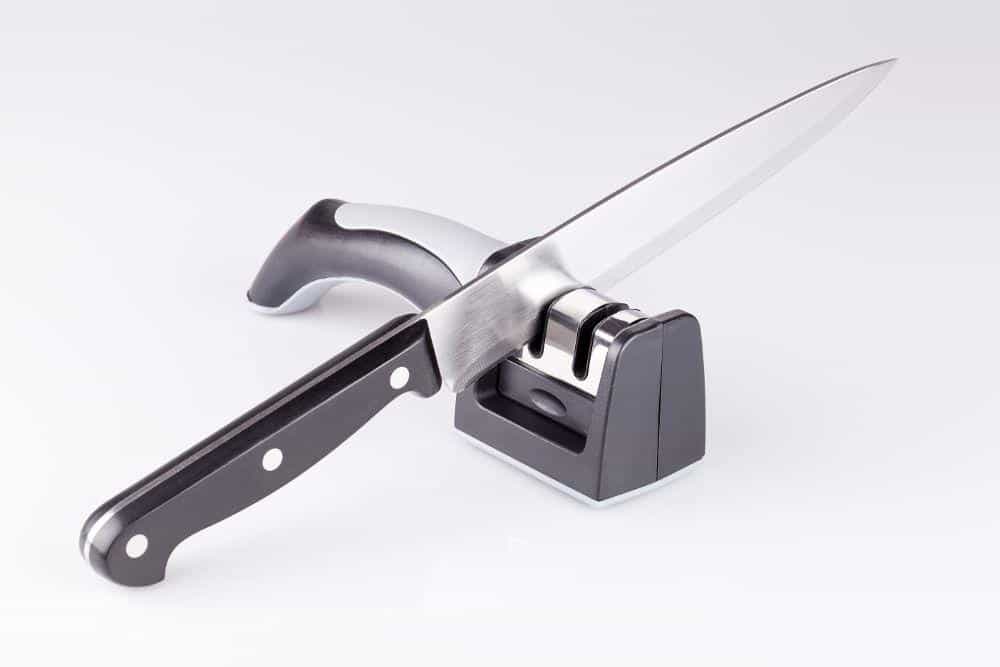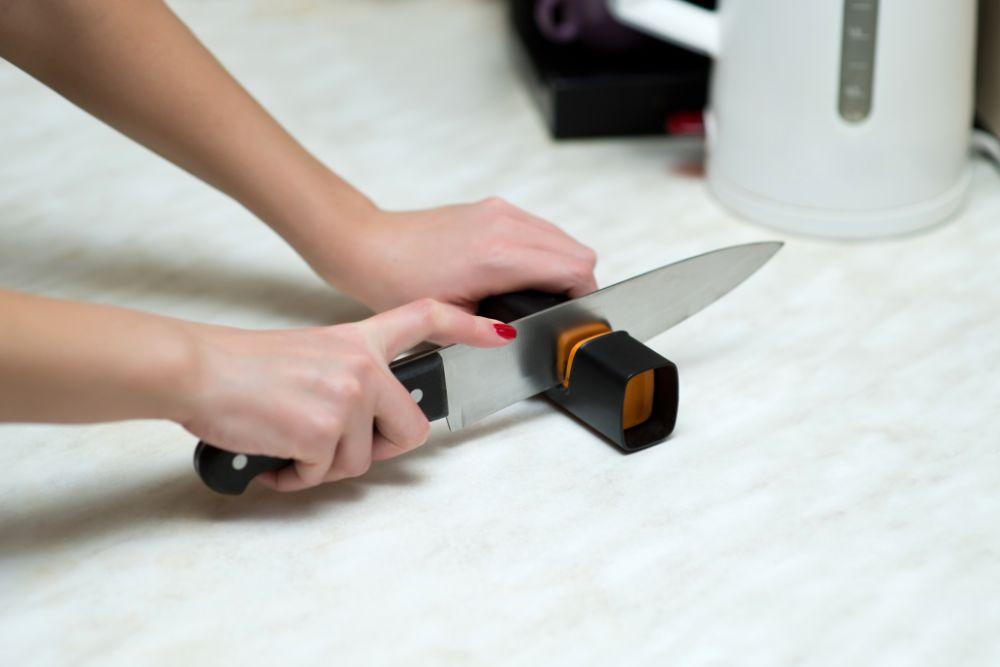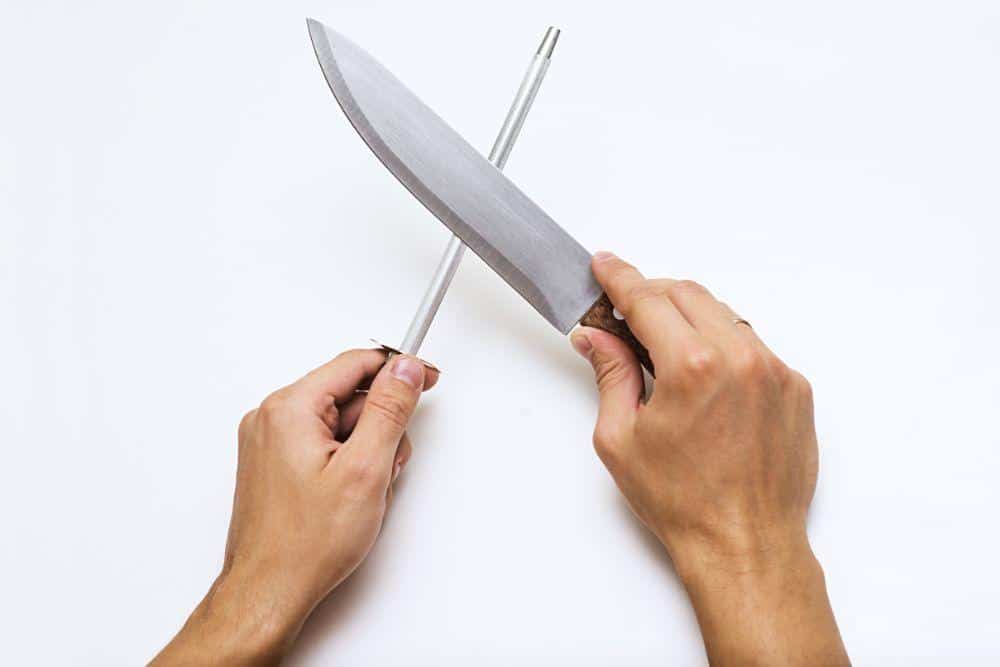Knives are some of the most used kitchen items for cooks and bakers. However, they tend to go dull after a while, especially if they're not properly taken care of. Part of proper knife care is sharpening knives occasionally - but what about the knife sharpener itself? Will it wear out, or does the material last forever?
Knife sharpeners do wear out, but only after a while. It can take years or even decades for a sharpener to stop working, and that's usually because it hasn't been used correctly. With proper care, a knife sharpener can last several decades.
Knife Sharpening 101 with Robert Ambrosi
However, there are several different kinds of knife sharpeners, each taking other care. Here is a brief guide on the lifespan of knife sharpeners and how to care for them, from a honing rod to an electric knife sharpener.
Each type of knife sharpener is made differently to break down differently. Some plastic components will fall apart long before the sharpening parts do. Others will last forever unless you misuse them. Each type works slightly differently and should be treated well.

Knife Sharpeners Should Last a Long Time with Proper Use and Care
It's crucial to know how to use your knife sharpener safely. Always use caution, and follow any necessary instructions when sharpening knives. Never allow children near blades unattended, and watch your surroundings as you sharpen. Even in a kitchen setting, knives are dangerous.
The most common type of knife sharpener is the pull-through knife sharpener. It usually comes with a knife set or can be purchased separately and was created as an upgrade to a honing rod or sharpening stone. Pull-through knife sharpeners are safe and straightforward to use and can sharpen a dull kitchen knife in minutes.
A pull-through sharpener has several components. The sharpening component is usually made of tungsten or another rigid material. It consists of one or two v-shaped blocks, traditionally covered in plastic for protection. The blocks can be made of tungsten, ceramic, or another rigid material suitable for sharpening knives.

A Pull Through Knife Sharpener Requires a Bit of Elbow Grease, but Gets Your Knives Sharpened Within a Minute or Two
Because the tungsten part of the sharpener is so strong, it won't wear out for decades. However, the plastic part may wear down, making it more challenging to use the knife sharpener. If this happens (usually after a few years of use), it might be time to replace the pull-through sharpener.
Electric knife sharpeners work the same way as pull-through sharpeners, except they use electricity to do the actual sharpening parts. Instead of v-shaped blocks or stones, electric sharpeners have two different rocks that grind against each other. These are powered by electricity to remove any excess metal from the blade's edge.
The sharpening stones in an electric sharpener can be made of steel, ceramic, or tungsten. They tend to last a while, but not quite as long as a pull-through sharpener because of the amount of wear. Ceramic sharpening steels are the most brittle and will crack after too much knife sharpening.
Although electric sharpeners can last for decades as well, they have more moving parts than any other kind. Before the sharpening stones give out, the plastic coating might. If the electricity doesn't work, there's no way of sharpening the knives, and the sharpener must be replaced.
While an electric and pull-through knife sharpener works to sharpen knives by taking off excess steel, a honing rod does the opposite. It reshapes the knife itself, pushing the flakes of steel back into their proper shape and making the knife work sharp through shaping it. A honing steel can be made of tungsten, steel, or ceramic.
Sharpening steels and honing rods are two different things, but they both accomplish the same end goal. However, honing steel does a better job of keeping the integrity of the knife. Instead of wearing down the knife for a sharper edge (like a pencil sharpener), a honing rod will push the frayed edges back together for the original sharpness.

Honing Rods are Favored by Professional Chefs
Honing rods are favorites among chefs with expensive knives, as they preserve the quality of the blades. Japanese knives often require sharpening rods instead of regular sharpeners. Depending on the quality of the rod itself, this type of sharpener can last for decades and never need to be replaced.
Before there were pull-through sharpeners, electric sharpeners, or evening honing rods, people used stones to sharpen knives. It's the same theory as a pull-through sharpener - the rock takes the excessive metal bits off the knife's edge, leaving only the sharpest blade edge for cutting.
Of course, modern chefs don't use any stones from the garden. Sharpening stones are generally made of tungsten, ceramic, or diamond. Knives require a stricter material than steel to scrape against and reshape or discard excess edge. Knife sharpening stones come in various shapes and sizes and work to make any dull knife sharp again.
Because these stones are made of extremely tough material, they are not likely to give out. There's no plastic or electricity to stop working, so as long as there's material for continuing sharpening knives, you can keep using your traditional whetstone or sharpening stone.
While most knife sharpeners take years or even decades to wear out totally, it's good to know the signs of a worn-out knife sharpener. Of course, if a sharpener isn't working to create a sharp knife edge, that's an obvious sign of a faulty sharpener. Whether it's worn out or another component doesn't work, it's time to replace it.
The more components a knife sharpener has, the more likely it is to give out. In pull-through and electric sharpeners, for example, the first part of wearing out is usually the plastic covering. If the plastic isn't working, the device is unsafe and shouldn't be used to sharpen dull knives.
Most knife sharpeners can last years or even a lifetime. It depends mostly on the quality of the sharpener itself and how often the tool is used. If you only sharpen your knives once every few months, you probably won't have to replace your knife sharpening tool. However, chefs who sharpen knives weekly might need a replacement eventually.
Expensive knives need a nicer sharpener. A cheap sharpener can damage the fine edge of an expensive knife or a Japanese knife. You should never use sharpening tools on a serrated knife. However, some honing tools can sharpen serrated knives. The rate of knife sharpener replacement depends on your use and the quality of instruments.
If you've never used a knife sharpener, your knives are likely suffering. Knives dull remarkably quickly, especially if they're used often. The edge of the knife should remain sharp for maximum safety and efficiency. However, knife sharpeners can be confusing if you've never used them.
There are several types of knife sharpeners, and the method varies depending on which one you have. Electric knife sharpeners have different instructions depending on the brand - always keep the manual and read it when you're ready to use it. Usually, however, these are easy to use.
A pull-through knife sharpener is one of the more common kinds. It is a simple design, with two wheels of tungsten or other tough material to take the dullness off the knife's edge. To use these, place the bottom of the blade in the sharpener and pull it through. Repeat this until the knife is sharp.
Whetstones and honing rods are slightly different and a little less safe. They work by reshaping the tiny inconsistencies on the blade instead of scraping them off. Use a whetstone or rod by sliding the edge of the knife across its surface. However, always use caution and always follow directions.
If you're still wondering about your knife sharpener or have further questions, here are some commonly asked questions and their answers.
A traditional knife sharpener takes off small bits of the knife to create the sharpest blade. While this works on regular knives, the serration on a serrated knife will wear down. You should never use a pull-through or electric sharpener on a serrated knife.
There are two main types of knife sharpeners - honers and sharpeners. Honing rods and stones push the steel of a knife back together to its sharpest position while sharpeners shave off excess steel.
Although it seems counterintuitive, a dull knife is more dangerous than a sharp knife. The more dull the edge is, the less precise a knife can be. A dull knife is much more likely to slip and cut a chef than an extremely sharp knife.
No matter what kind of knife sharpener you have, you probably won't need to replace it for several years, if at all. However, knowing how to use it properly and care for your knives will make your sharpener and knife set last longer and work better.
